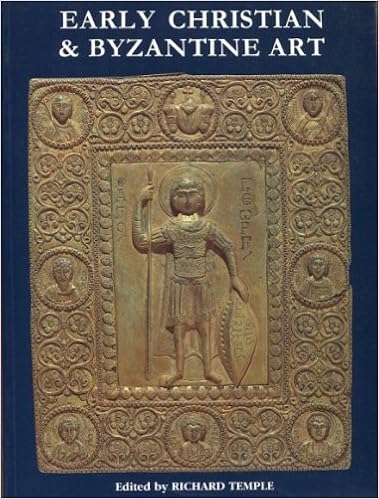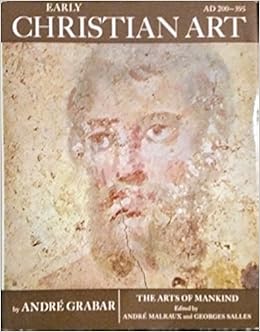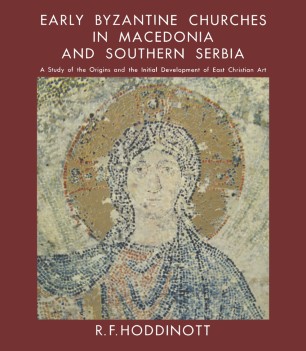Early Christian and Byzantine Art
Sarcophagus of Junius Bassus, 359 C.E., marble (Treasury of Saint Peter’s Basilica)
Early Christian art, also called Paleo-Christian art or primitive Christian art, architecture, painting, and sculpture from the beginnings of Christianity until about the early 6th century, particularly the art of Italy and the western Mediterranean. (Early Christian art in the eastern part of the Roman Empire is usually considered to be part of Byzantine art.) The Christian religion was part of a general trend in the late Roman Empire toward mysticism and spirituality. As Christianity developed, its art reflected the prevailing late antique artistic climate. Except for differences in subject matter, Christian and pagan works looked much the same; in fact, it is possible to show that the same workshop sometimes produced sculpture for both Christian and non-Christian purposes.
The earliest identifiably Christian art consists of a few 2nd-century wall and ceiling paintings in the Roman catacombs (underground burial chambers), which continued to be decorated in a sketchy style derived from Roman impressionism through the 4th century. They provide an important record of some aspects of the development of Christian subject matter. The earliest Christian iconography tended to be symbolic. A simple rendering of a fish was sufficient to allude to Christ. Bread and wine invoked the Eucharist. During the 3rd and 4th centuries, in the catacomb paintings and in other manifestations, Christians began to adapt familiar pagan prototypes to new meanings. The early figural representations of Christ, for instance, most often show him as the good shepherd by directly borrowing from a classical prototype. He was also sometimes depicted in the guise of familiar gods or heroes, such as Apollo or Orpheus. Only later, when the religion itself had achieved some measure of earthly power, did he take on more exalted attributes. Narratives tended at first to be typological, often suggesting parallels between the Old and New Testaments. The earliest scenes from the life of Christ to be depicted were the miracles. The Passion, particularly the Crucifixion itself, was generally avoided until the religion was well established.
The beginnings of Early Christian art date to the period when the religion was yet a modest and sometimes persecuted sect, and its flowering was possible only after 313, when the Christian emperor Constantine the Great decreed official toleration of Christianity. Subsequent imperial sponsorship brought the religion popularity, riches, and many converts from all classes of society. Suddenly the church needed to produce art and architecture on a more ambitious scale in order to accommodate and educate its new members and to reflect its new dignity and social importance.
Churches and shrines were soon being built throughout the empire, many sponsored by Constantine himself. These buildings were usually five-aisled basilicas, such as Old St. Peter’s in Rome, or basilican-plan buildings centring upon a round or polygonal shrine, such as that in the Church of the Nativity in Bethlehem. Large-scale sculpture was not popular, but relief sculpture on sarcophagi, such as that of Junius Bassus (died 359), and ivory carvings and book covers continued to be produced. The walls of the churches were decorated with paintings or mosaics to instruct the faithful. The church of Sta. Maria Maggiore in Rome has an extensive mosaic program of Old and New Testament scenes that was begun in 432. Painting also illustrated liturgical books and other manuscripts.
The art of this period had its roots in the classical Roman style, but it developed into a more abstract, simplified artistic expression. Its ideal was not physical beauty but spiritual feeling. The human figures thus became types rather than individuals and often had large, staring eyes, “the windows of the soul.” Symbols were frequently used, and compositions were flat and hieratic, in order to concentrate on and clearly visualize the main idea. Although the art of the period intentionally departed from earlier naturalism, it sometimes has great power and immediacy.
Britannica Academic, s.v. "Early Christian art," accessed August 16, 2019
Books on Early Christian and Byzantine Art & Architecture
-
Early Byzantine Pilgrimage Art by
Call Number: N6250 .V54 2010ISBN: 9780884023586Publication Date: 2011-01-01 -
-
Early Christian and Byzantine Art by
Call Number: N7832 .L59 1997ISBN: 0714831689Publication Date: 1997-04-24 -
 Early Christian & Byzantine art : textiles, metalwork, frescoes ... and other items from the fourth to the fourteenth centuries
by
Call Number: N7830 .E37 1990ISBN: 1852302143
Early Christian & Byzantine art : textiles, metalwork, frescoes ... and other items from the fourth to the fourteenth centuries
by
Call Number: N7830 .E37 1990ISBN: 1852302143 -
The Early Byzantine Churches of Cilicia and Isauria by
Call Number: NA5869.C55 H55 1996ISBN: 0860786072Publication Date: 1996-04-28 -
The Christian Catacombs of Rome by
Call Number: DG807.4 .F56 2002ISBN: 3795411947Publication Date: 2006-03-01 -
The Churches and Catacombs of Early Christian Rome by
Call Number: DG816.29 .W43 2001ISBN: 9781902210582Publication Date: 2001-11-01 -
Judaism and Christian Art by
Call Number: N8180 .J83 2011ISBN: 9780812242850Publication Date: 2011-02-17 -
-
 Dyrrachium in the Early Christian and Byzantine period
by
Call Number: DR998.D85 M57 2013ISBN: 9789928051257
Dyrrachium in the Early Christian and Byzantine period
by
Call Number: DR998.D85 M57 2013ISBN: 9789928051257 -
The Black Sea, Paphlagonia, Pontus and Phrygia in Antiquity by
Call Number: DJK64 .B54 2012ISBN: 9781407310312Publication Date: 2012-11-20 -
Corinth in Late Antiquity by
Call Number: DF221.C6 B76 2018ISBN: 9781784538231Publication Date: 2018-02-22 -
Picturing the Bible by
Call Number: N7832 .P53 2007ISBN: 9780300116830Publication Date: 2007-12-13 -
Early Christian Art and Architecture by
Call Number: N7832 .K5913 1996ISBN: 0334026326Publication Date: 2012-06-18 -
 Early Christian art : from the rise of Christianity to the death of Theodosius
by
Call Number: N7832 .G6813 1968
Early Christian art : from the rise of Christianity to the death of Theodosius
by
Call Number: N7832 .G6813 1968 -
The Sacred Architecture of Byzantium by
Call Number: NA370 .P38 2014ISBN: 9781780762913Publication Date: 2014-03-27 -
The Early Christian Monuments of Ravenna by
Call Number: NA5621.R3 V47 2011ISBN: 9782503541150Publication Date: 2011-12-21 -
 Some observations and questions regarding early Christian architecture in Thessaloniki
by
Call Number: NA5601.T45 C87 2000
Some observations and questions regarding early Christian architecture in Thessaloniki
by
Call Number: NA5601.T45 C87 2000


